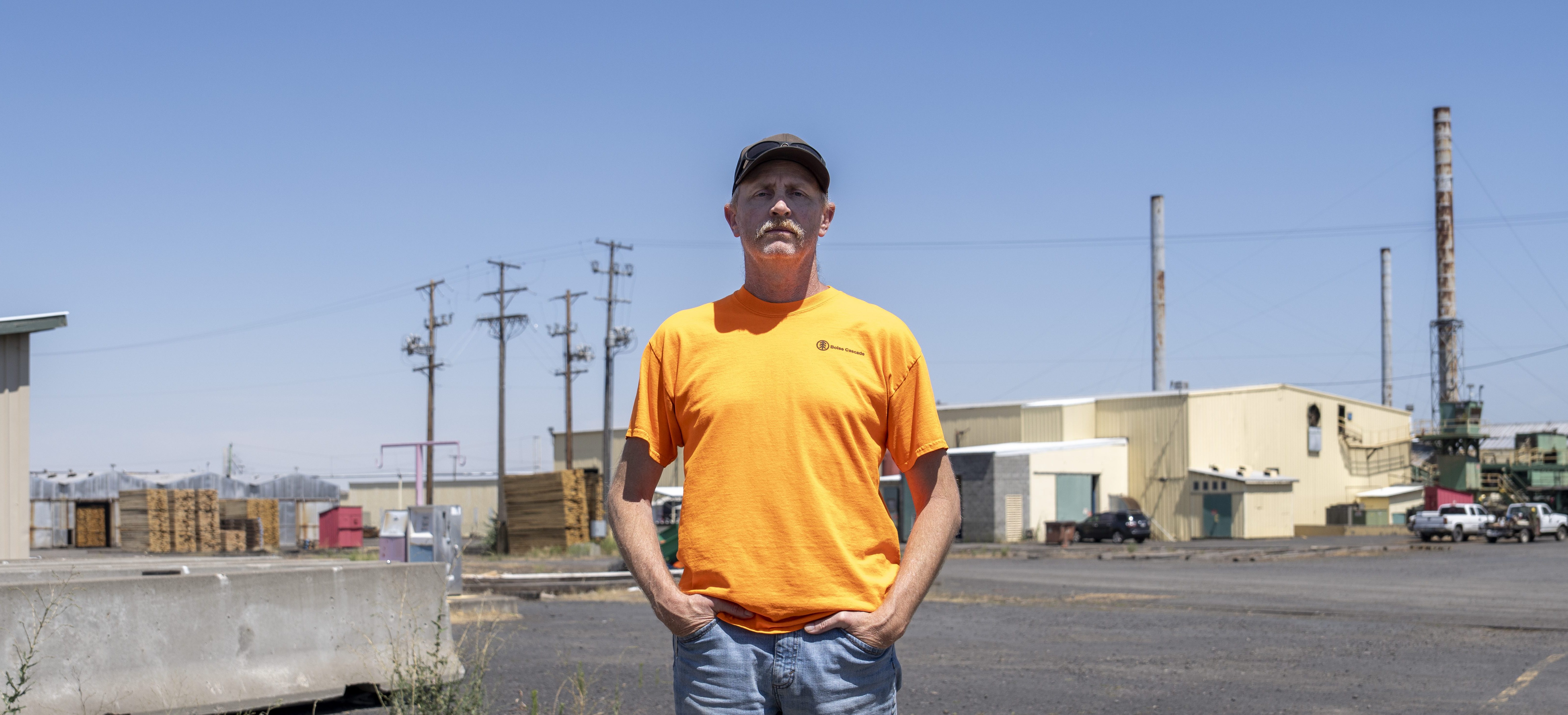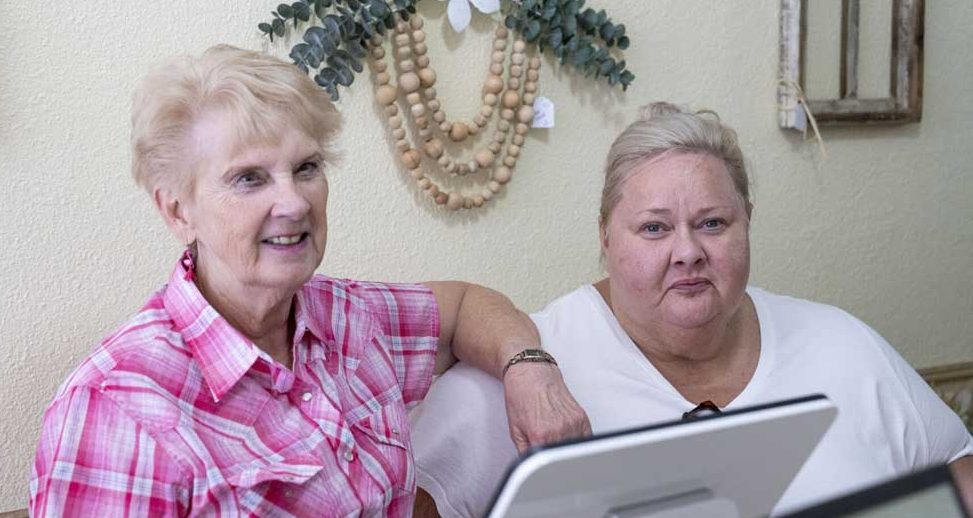Abel’s Army
Published 5:00 am Tuesday, September 3, 2024

- Abel Bain, 7, of Baker City, fakes terror of being caught by a dinosaur during a family vacation.
BAKER CITY — Jared and Amanda Bain always noticed their son, Abel, moved a bit differently than other kids.
During regular doctor check-ups, Abel was behind in milestones typical for his age.
Trending
During the summer of 2023, the Baker City couple noticed Abel, then 6, walked on his toes after jumping, playing in cold water or playing in a bouncy house.
At first, a medical provider mentioned autism as a diagnosis. But other symptoms hinted at something different — Abel struggled to walk upstairs or climb in the car, and he lacked coordination and balance. Plus, Amanda said, he didn’t walk on his toes all the time.
“He would only do it after a lot of physical activity,” Amanda said.
Then the doctor asked Abel to get on the floor and stand back up. Abel followed the directions by walking his hands up his shins, knees and thighs.
“It’s how he’s always gotten up,” Amanda said.
But the doctor recognized these movements as Gowers’ sign, a main sign of Duchenne muscular dystrophy, a severe form of muscular dystrophy that leads to muscle loss and weakness. It is diagnosed in 20,000 children globally every year, according to the Muscular Dystrophy Association.
Trending
A blood test on Feb. 3, 2024, showed Abel had a creatine kinase level of 35,000 — a healthy level is 100. This indicated, Amanda said, a substantial amount of muscle damage.
On Feb. 8, medical staff took a DNA sample to determine the type of muscular dystrophy. The Bains waited about five weeks for the results, which confirmed that it was Duchenne MD.
“I didn’t anticipate anything this serious being wrong,” she said.
This type, Amanda said, is typically inherited from the mother’s side as a mutation of the dystrophin gene. Amanda is not a carrier.
“It was a random mutation,” she said. “When you can’t produce dystrophin, your muscles can’t repair.”
There is no cure.
“It’s a horrible disease,” she said.
She said doctors put Abel on a high dose of steroids to help prolong his muscle strength and fulfill requirements to be eligible for gene therapy.
After Abel’s diagnosis, Jared dove into research about Duchenne MD to learn about treatments and new advances. When he discovered a gene therapy trial at Stanford University, he found a contact and advocated for his son to be accepted into the program.
In late September, the Bains will take Abel to San Francisco for the gene therapy treatment. After the infusion, Amanda and Jared will take turns staying with Abel for three months for labs and follow-up exams. Amanda said the treatment has been shown to slow the progression of the disease and improve muscle health.
Abel, she said, has never complained about muscle soreness or being tired.
“He has such a good outlook on life, he’s just so happy,” she said. “He’s everybody’s favorite. He’s such a lovable kid.”
Early diagnosis is key
Most symptoms of muscular dystrophy appear between the ages of 3 and 5, according to the Muscular Dystrophy Association. The Mayo Clinic reports signs can include frequent falls, difficulty getting up from a sitting position, trouble running and jumping, a waddling gait, walking on toes, large calf muscles, muscle pain and stiffness, learning disabilities and delayed growth.
As muscle weakness progresses, the use of a wheelchair may be necessary — sometimes as early as age 12.
Early diagnosis is important, Amanda said, because treatment and therapies can start sooner to preserve muscle. The Bains are advocating for testing at birth for the CK level — the same blood test that led to Abel’s diagnosis.
They’ve gained the support of state Rep. Mark Owens, whose legislative district includes Baker County. Owens sent a letter to the Northwest Regional Newborn Bloodspot Screening Program advisory board to advocate for adding Duchenne testing to Oregon’s newborn screening panel.
Amanda will speak to the advisory board Sept. 24, the day after Abel’s treatment begins at Stanford.
Chains of Hope
To be more available for Abel and medical appointments, Amanda reduced hours at her job and started Chains of Hope to make permanent jewelry (bracelets that don’t have a clasp) at pop-up shows around Baker City.
As she’s chatted with customers about Abel and muscular dystrophy, she said others have shared stories of their own medical challenges.
“I’ve met so many amazing people,” she said.
Her goal with Chains of Hope, in addition to have more time with Abel, was to save money to take him on adventures to make memories. The family went to Disneyland in June.
“He loved that,” she said. “He talks about it all the time.”
Although the trial in San Francisco will delay her Chains of Hope sessions, she’ll post updates on Instagram: chainsofhope.7.
Walk for Awareness
World Duchenne Awareness Day is Saturday, Sept. 7, and the Bains, with the help of Abel’s special education teacher Rochelle MacKerchar, are planning a Walk for Awareness for people to learn more about the disease and meet Abel, who will be in attendance.
Registration is $35 for a T-shirt, the walk and green porch light bulb, $20 for a T-shirt and walk only, $10 for just the walk and free for age 14 and younger.
(Green is the color for muscular dystrophy awareness, and everyone who receives a green porch light is encouraged to keep it on throughout September.)
T-shirts will be limited for same-day registrations.
The link to sign up in advance is on the Facebook page for Abel’s Army.
On the day of the walk, registration starts at 8 a.m. at the Baker Sports Complex batting cages.
The walk, along the Leo Adler Memorial Parkway, starts at 9 a.m.
Proceeds from the event will help support medical costs.
For more information
Visit the Facebook page for Abel’s Army or call/text 410-231-1849.
“It’s a horrible disease.”
— Amanda Bain, of Baker City, whose son, Abel, 7, has been diagnosed with Duchenne muscular dystrophy









